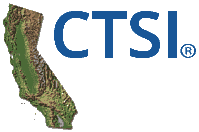Celebrating 40 years of service to the Courts and Government Agencies, California Traffic Safety Institute (CTSI) is a non-profit company, which has been providing staffing and other services to the California Superior Courts in the administration of the traffic violation school programs since June 27, 1985.
CTSI operates under the legislative authority of CVC 11205 as amended in September 1991.
Pursuant to AB2499, which was passed in the 2009-2010 legislative session, effective July 1, 2011, traffic violations where a defendant has elected or been ordered to attend a traffic violator school (TVS) will no longer be a dismissal on the driving record. They will now become a confidential conviction.
A confidential conviction will mask the violation from your public record. Insurance companies will not see the confidential conviction.
A traffic violator school conviction will not be masked if:
- There is a successful TVS completion within the previous 18 months.
- The conviction is a major (2 point) violation (DUI or Reckless Driving).
- The driver was operating a commercial vehicle at the time of the violation.
- A Class A or B licensee operating a non-commercial vehicle (0 points displayed).
Important Traffic School Attendance Information:
A court may refer a driver to traffic violator school at any time. However, California Vehicle Code Section 1808.7 mandates that only one conviction in an eighteen (18) month period be masked from public view on your driving record. The eighteen (18) month period is calculated from citation/violation date, not class attendance date. Courts are required to adjudicate all major (2 point) violations; courts are prohibited from sending drivers who commit major violations to traffic violator schools for the purpose of masking a conviction.
If you need an extension of time, please contact the court which imposed the sentence; CTSI has no authority to grant extensions. You may attend any traffic violator school with a valid license status listed on the DMV’s web-site. When you have completed the course, the school will issue you a receipt and the school will file the completion certificate electronically.
Benefits of Attending Traffic Violator School:
NOTICE: If you are eligible and decide not to attend traffic school your automobile insurance may be adversely affected. The citation will also go on your record and reflect the point count that goes along with the violation.
Important Notice!
California Traffic Safety Institute would like to warn individuals that a scam text message claiming to be from the Superior Courts of California and/or the Department of Motor Vehicles (DMV) regarding unpaid traffic tickets or tolls are becoming increasingly common. These texts messages often contain links to fake websites where scammers attempt to collect personal or financial information. The DMV and the Courts will never reach out by text to request payments or personal information.
Take these steps to reduce the chances of falling victim to a text message scam:
- Never respond to unsolicited or suspicious texts — If you receive a message asking for personal or financial information, do not reply.
- Verify the source — If you are unsure, always contact the DMV through official channels.
- Call the DMV if you have concerns — The DMV customer service team is available to help you at 800-777-0133.
Please see DMV warning about fraudulent texts: https://www.dmv.ca.gov/portal/news-and-media/dmv-warns-of-fraudulent-text-scam-asking-for-toll-payments/

